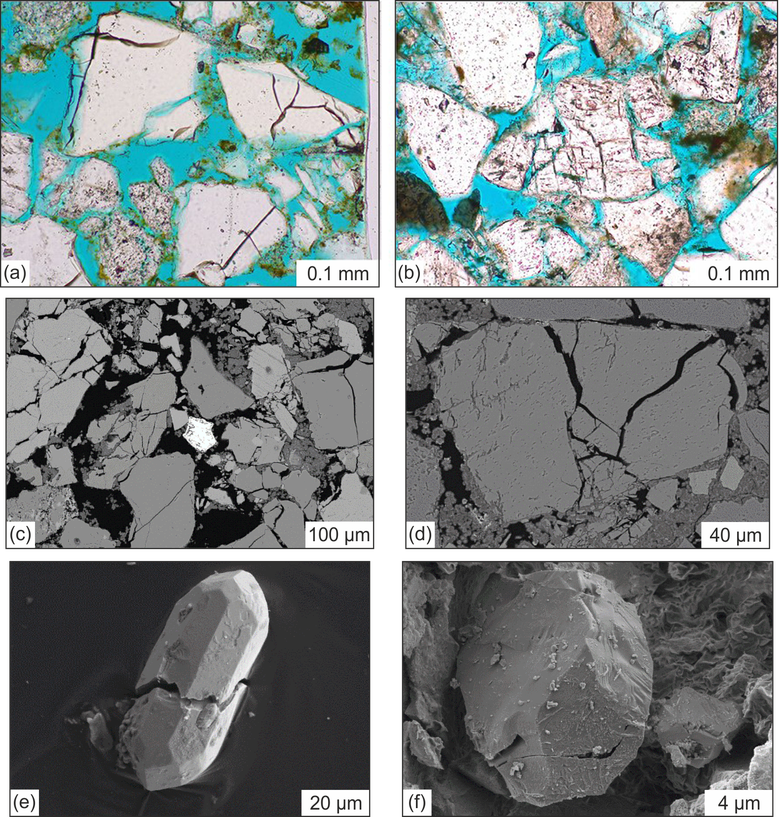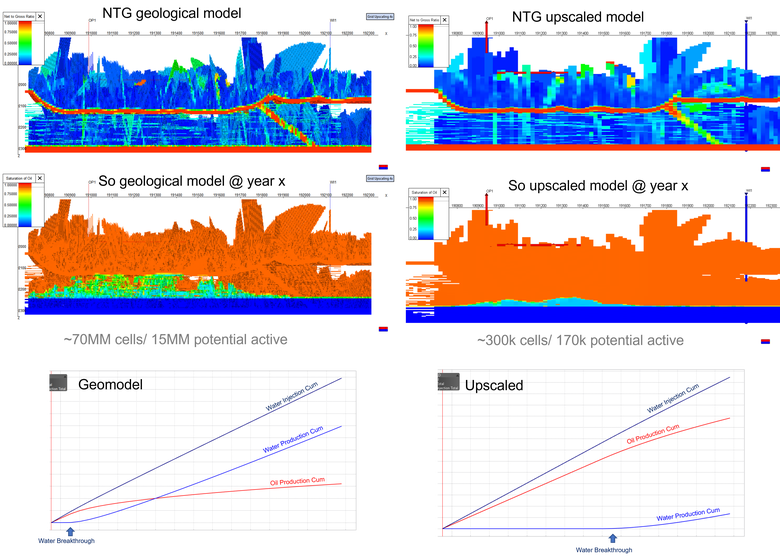Sand Injection Research Group (SIRG): Phase 4
Principal Investigators: Andrew Hurst and Isabelle Lecomte - supported by Andy Morton, Lyudmila and Jeff Wilson
Senior Research Fellow: Matthew Brettle
Post-doctoral Research Fellows: Antonio Grippa, Brian Burnham, Gustavo Zvirtes, and Tara Stephens
Research Assistants: Robert Waltham, Daniel Holden, and Eyo Okon.
PhD Research Students: Wiktor Luzinski and Khalid Syaifullah
Goals for Phase 4 were to develop and test methods for integrating quantitative outcrop data in subsurface static and dynamic models by using SIRG’s outcrop database to evaluate exploration prospects and to optimise locations of development wells. Expansion of the use of seismic modelling of outcrop data, static modelling of N/G distribution, determination of diagnostic micro-scale characteristics and dynamic modelling of recovery processes combine to provide members with a better basis for subsurface applications. Identification and quantification of missed pay is a major target of Phase 4, how to identify its presence, geometry, genesis, and elucidation of the genetic relationship to seismic-scale sandstone intrusions.
1. Creating and optimising workflows when exploring and developing sand injection complexes
Underestimation of reserves in the range of 15 to >40% is quoted informally as typical of the appraisal and development of sand injection complexes; in several documented cases underestimation exceeds 300%. Seismic surveys do not detect all significant sandstone reservoir volume. Parts of sand injection complexes may have in excess of 90% of intrusions undetected that cumulatively represent ~40% of the reservoir volume. Forward seismic modelling of outcrop data reveals that the seismic geometry and character of intrusions below seismic resolution are typically dissimilar, for example, breccia and dyke swarms. Recognising and characterising breccia and dyke swarms on seismic data remains early-stage research but is critical to better constraint of reserves and optimal location of development wells.

Synthetic seismic generation. Integrated outcrop model (Dosados Canyon in the PGIC), and interpretations (right section) facilitates generation of 2D synthetic seismic images using 2D forward modelling processes. A priori input enhances understanding between expectant seismic results and interpretation limits.
2. Optimisation of sandstone intrusion reservoir models from outcrop analogues
Identification of spatial relations between depositional parent units and intrusions, and the geometry and characteristics of intrusion margins remains a major part of SIRG’s work with outcrop analogues. Diagnostic characteristics are well-defined in outcrops but more elusive in subsurface data and only by carrying out detailed outcrop studies can more confidence be assigned to use of geological features to differentiate intrusions from depositional sandstone. More broadly this includes defining characteristics of sand fluidisation (from micro-scale upward) and specifically internal structures typical of deformed parent units and sandstone intrusions.
(A-B). Microfractured sand grains from PGIC sandstone intrusions. Petrographic (thin section) images of fractured quartz (a) and feldspar (b). Blue epoxy fills pores including open fractures. (C-D). BSEM micrographs. Sandstone with angular quartz & feldspar grains most of which are micro-fractured (c). A single feldspar grain with a jigsaw network of large open mirco-fractures and localised (e.g. top left) smaller fractures that in part follow cleavage planes (d). (E-F). SEM images. Broken zircon. The upper & lower parts of the grain remain joined (e). Feldspar with surfaces almost entirely fracture planes. Surface ridges may be micro-hackles (f). All fractures formed by high velocity inter-particle collisions in a dilute turbulent flow.
Three new outcrop objectives are scheduled:
- Characterisation of the PGIC Dosados Mbr parent unit – lithostratigraphy, thickness, discordance, deformation/fluidisation – along a ~25km slightly oblique dip section of the channel complex underlying the PGIC
- Characterisation of the sand extrudites on the palaeo-seafloor (Cima Lentil) at the time of the PGIC emplacement – lateral extent and thickness variations, geometry of basal contact, internal structures
- Geomechanical evolution of hydraulic fracture propagation and associated formation of intrusions – specific focus on the geometry and distribution of sub-seismic scale intrusions, internal structures and potential rock physical variations including breccia characterisation.
- Continued research of breccia occurrence, predominantly in the TGIC – clast characterisation and core/image-log scale observations, N/G distribution, rock physical characterisation and quantitative evaluation of large sandstone intrusions (geometry, thickness, volume, distribution).
- Extensive sampling of reservoir, and some non-reservoir units will provide materials for granulometric, petrographic, mineralogical, poro/perm and CT-scan analyses.
Collectively these provide the building blocks and dynamic properties for static and dynamic reservoir simulation models.

Example of geological scale (fine) and upscaled (coarse) static and dynamic simulation models, showing (top to base) NTG, oil saturation at x years from production start-up, and cumulative fluid production/ injection volumes.
Significant progress is made with the generation of 3D static models of sandstone injection complexes, in particular quantifying sub-seismic resolution N/G volumes and including these in reserve models. To attain computational efficiency in dynamic simulation of well productivity and fluid recovery (hydrocarbon + water) high resolution geological data in 3D models is typically avoided. Initial flow-simulation experiments with fine-scaled grids of sandstone intrusions produce very different production profiles with respect to the timing of water breakthrough and rates of water influx than predicted using coarser grids. Further dynamic simulations are investigating the optimal location of development wells in shallow sections of sand intrusion reservoirs that will allow sweep of thicker hydrocarbon columns and further delay water ingress. A broad range of outcrop data input with different gross geometry and NTG distribution are being tested.
